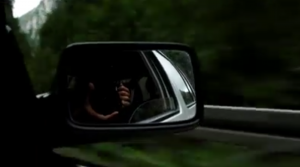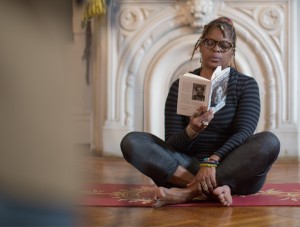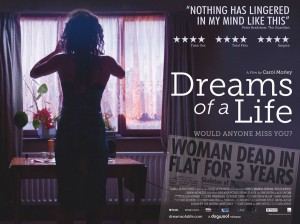Filmmaker: Kirsten Johnson
Year: 2016
Country of Origin: United States
Format: Streaming
Running time: 102 min
Still from Cameraperson
Synopsis:
Documentary cinematographer Kirsten Johnson takes the audience on a reflective journey through her career in this documentary comprised of footage from decades of past projects. Described as a “memoir” of “images that have marked me and leave me wondering still,” Johnson reflects outwards, meditating on the documentary form and its relationship to ideas of truth and transparency, and inwards, exploring the ways being a cinematographer has shaped her emotional and personal life. She moves from a boxing match in Brooklyn to a nursery in Nigeria to postwar Bosnia in a structure that initially feels like a stream of consciousness, but is in fact deliberately designed to pose philosophical and ethical questions that stay with you long after the film has ended.
Bill Nichols writes extensively on the documentary form and how its changed over history, each iteration of form a reaction to the last in a futile attempt to portray the objective truth. The inclusion of “mistakes”–the moments of acknowledgement of the camera by the subjects, the shaky camerawork as Johnson sets up her next shot, the times when Johnson herself is heard reacting to the events on screen or interacting with the subjects–gives this film a layer of transparency which reminds us that there is a human behind the image. This resembles elements of what he considers “reflexive documentary” which makes use of a self reflexive critique or statement to acknowledge the documentary form and its impact on authenticity. These “mistakes” are moments that would be left out of any other documentary for the sake of presenting a perfect film product or portraying an objective truth, which is impossible. In this alignment, the audience is able to acknowledge the subjectivity of the image–in the mistakes, we see how the camera image is used to promote an ideology, to emphasize or ignore, to reveal a truth through lying or lie to tell the truth (Koresky).
Halfway through the film, there is a montage of locations around the world where atrocities–murders, rapes, torture–took place. Afterwards, a Bosnian translator and a field producer are discussing their careers documenting the stories of victims of humanitarian atrocities. “Our jobs are hard because we process these stories and we put them inside ourselves. So how do we deal with the trauma…we who collect these stories and share them with the world?” Cameraperson succeeds because it doesn’t attempt to describe the truth of the world, but rather Johnson’s personal truth as someone who has become one with her medium. When a filmmaker shows this level of vulnerability, you can’t look away. By taking advantage of film’s ability to connect ideas over time, using time and place to come to a greater realization of what it means to document, to experience, and to live.
Bibliographic Items:
Koresky, Michael. I Am a Camera. Film Comment; Vol. 52, Iss. 5
https://search.proquest.com/docview/1825196904/7FDE41A4086E4CA9PQ/1?accountid=14194



